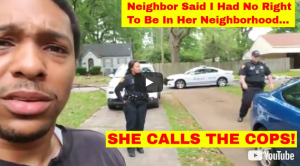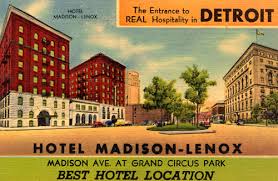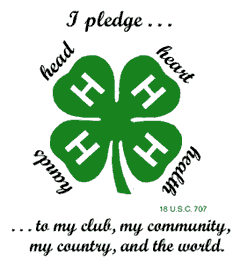The announcement that the Trump Administration is considering fundamental changes in federal regulations to enforce strict binary gender norms for all Americans is distressing, demeaning, ugly, to say the least. However, it occurs to me that this may be a good time to reflect theologically about gender; can those of us who oppose the various attempts to control others’ bodies find guidance from biblical texts and spiritual reflection?
I have been engaged in various small ways supporting transgender people for many years, including during my time as Pastor of MCC Richmond VA where I worked closely with an active trans community on several projects.
Additionally, over the past several years, I have begun to identify as gender queer—still am comfortable being a man in my birth body, but clear that my understanding of that gender differs from the norm. This process began many years ago when I started wearing long, dangly earrings that many say are feminine. (see my earlier posts, “Choosing to Be Me Again” and “Why Do Watches Have Gender?”).
More recently, as the controversies swelled about bathroom and locker room usage, I began to reflect theologically about gender and specifically about the movement by many, particularly in church and government, to enforce rigid gender norms.
 I begin from a truth I learned long ago from Martine Rothblatt in her book, The Apartheid of Sex: A Manifesto on the Freedom of Gender (1995). She writes
I begin from a truth I learned long ago from Martine Rothblatt in her book, The Apartheid of Sex: A Manifesto on the Freedom of Gender (1995). She writes
“There are five billion people in the world and five billion unique sexual identities. Genitals are as irrelevant to one’s role in society as skin tone.” (xiii)
Of course, we know that skin tone and gender play powerful roles in how society is organized but her point is apt: neither makes any real difference, except as society creates and enforces, and we often reinforce, structures to keep these two aspects of ourselves in line.
She also wrote that it is time to end the classification of people by sex, “because in truth our sex is as individualized as our fingerprints and as special as our souls (my emphasis).” (157). I hope to return to this proposal on another occasion.
As special as our souls…………indeed. There’s where God comes in.
The Hebrew text in Genesis 1:27 reads, “And God created man in His image, in the image of God He created him; male and female He created them.” (Jewish Study Bible). Those who seek to get everybody in one or the other box, male or female, rely on this text and others to say that what God has ordered must be followed.
Of course, there are a number of objections to be raised about these arguments. First, for me, is the reality that the Bible, in Hebrew and Christian texts, makes many claims about what God orders and commands. Some faithful people believe that every word is dictated by God, but even if you do, and I don’t, we still have to engage in interpretation to understand what the commands mean for us now. My point: We don’t actually have any assurance that the statement in Genesis 1:27 means that there are only two genders.
Second, could it not mean that God’s creation of each human involves our being some sort of combination of both? A footnote in The Jewish Study Bible, for example, says, “Whereas the next account of human origins (Gen. 2:4b-24) speaks of God’s creation of one male from whom one female subsequently emerges, Gen. Chapter 1 seems to speak of groups of men and women created simultaneously.”
 A note in The Inclusive Bible: The First Egalitarian Translation, points out that the Hebrew for God in this passage, Elohim, is actually a plural (literally “gods” or “powers”), but is ordinarily treated as a singular noun. “This verse and two others (Genesis 3:22 and 11:7) are notable exceptions. The ‘us’ has been explained as the majestic or imperial plural; others see it as God including the angelic host; still others, as a reflection of the more ancient polytheistic roots of the story.“ (There are times when the word is used of lesser, foreign gods, but to the best of my understanding and searching these three instances are the only times in the ancient text has God referring to God’s self as “us.”)
A note in The Inclusive Bible: The First Egalitarian Translation, points out that the Hebrew for God in this passage, Elohim, is actually a plural (literally “gods” or “powers”), but is ordinarily treated as a singular noun. “This verse and two others (Genesis 3:22 and 11:7) are notable exceptions. The ‘us’ has been explained as the majestic or imperial plural; others see it as God including the angelic host; still others, as a reflection of the more ancient polytheistic roots of the story.“ (There are times when the word is used of lesser, foreign gods, but to the best of my understanding and searching these three instances are the only times in the ancient text has God referring to God’s self as “us.”)
Might another way to read that is to see is that these groups, and God, are not as rigidly defined as we have been taught to believe? We now know, thanks to genetic studies, that many of us are not purely one or the other, that our genes are combinations of X and & Y chromosomes in varying proportions. I think of “effeminate men” and “mannish women” in this regard, Among some Native American tribal traditions, Two Spirit persons exhibit behaviors and attributes of both genders and are considered to have special spiritual powers. Is not God all of these, and more?
However, theologically speaking, there is a larger issue at play here. When we interpret biblical texts—and that is what we always must do, interpret them because we cannot ever be absolutely certain of the intention by those who repeated these texts and eventually wrote them down—what is our standard of interpretation?
Do we interpret in opposition to what we see around us, that is, do we insist that any new realities discovered since the texts were recorded and canonized be disregarded and/or declared the work of evil forces? Or do we seek to bring the reality in front our eyes and the texts into harmony? Do we see in the texts the promise of more wisdom or do we simply repeat the wisdom from before? Do we let creation unfold or do we insist that God created everything eons ago and nothing has changed?
Indeed, do we let God continue to create or do we give God thanks for what God has done and then, in effect say,” Stop God, we don’t want anything new, don’t give us any new ideas, any new information?” In my view, this is idolatry, creating a false idol, calling it God, and insisting that there is nothing new in God’s universe.
 When human beings play God by not letting God be God we suffer. In this case, transgender, gender variant, gender queer, folks suffer. What is being considered by the Trump Administration is codifying that which was never meant to be codified, at least not by God, who is the author of change and growth every moment of every day.
When human beings play God by not letting God be God we suffer. In this case, transgender, gender variant, gender queer, folks suffer. What is being considered by the Trump Administration is codifying that which was never meant to be codified, at least not by God, who is the author of change and growth every moment of every day.
As I have written elsewhere, “We serve a God who is always messing with our all-too-human arrangements, our desire for things to be neat and tidy and easy” (See “Faithful to a Very Queer-Acting God, Who Is Always Up to Something New” in Queering Christianity: Finding a Place at the Table for LGBTQI Christians, Shore-Goss, Bohache, Cheng, and West, eds. Praeger 2013).
In that same essay, I quote Lisa Isherwood and the late Marcella Althaus-Reid,
God dwells in flesh and when this happens all our myopic earth-bound ideas are subject to change; the dynamic life-force which is the divine erupts in diversity and the energy of it will not be inhibited by laws and statutes. Far from creating the same yesterday, today and tomorrow, this dynamism is always propelling us forward into new curiosities and challenges. It does not shut us off from the world; it is the world drawing us into more of ourselves as we spiral in the human/divine dance (“Queering Theology,” in The Sexual Theologian: Essays on Sex, God, and Politics, T& T Clark, 2004).
This proposal by the administration—and supported by many in various religious groups—is anti-God. They claim they are serving God, but it is a hollow God they serve, as indeed are all our efforts to contain God in our self-justifying insistence on things remaining exactly as they were (or at least as we think they were).
 We must of course oppose it, and all like-minded efforts to limit and even eliminate human and natural diversity from the globe. It is always a tall order to stand against forces of repression and injustice, against those who refuse to see God really at work in changing us and the world.
We must of course oppose it, and all like-minded efforts to limit and even eliminate human and natural diversity from the globe. It is always a tall order to stand against forces of repression and injustice, against those who refuse to see God really at work in changing us and the world.
But we can do so knowing that God’s creation has many more than two genders. Indeed, the creation of genders is an on-going act of God because God is still creating humans. Further, even as we labor as faithfully and courageously as we can and as we know our own limits, God is not going away, God adapts and prods and beckons us in directions new to us (though not to God). I say this not so much to offer comfort to those under threat from this proposal and many other efforts to limit humanity, but rather to affirm the reality that all things are, despite opposition, becoming new.
Thanks be to God for all we have received, are receiving, will receive!




 For me, however, they converge in offering real life ideas and strategies for that change. And they each share truths and history about how those struggling for freedom, work for justice and wholeness in the world help bring about real change.
For me, however, they converge in offering real life ideas and strategies for that change. And they each share truths and history about how those struggling for freedom, work for justice and wholeness in the world help bring about real change. When I read her piece I was buoyed up. It makes so much sense. Those who are trying to take us back to some imagined golden time (“fake news”) are the ones reacting to, and resisting, the flow of history which has, here and elsewhere, pushed the world to new levels of justice, dignity, equality, and inclusion (even as there is so far yet to go).
When I read her piece I was buoyed up. It makes so much sense. Those who are trying to take us back to some imagined golden time (“fake news”) are the ones reacting to, and resisting, the flow of history which has, here and elsewhere, pushed the world to new levels of justice, dignity, equality, and inclusion (even as there is so far yet to go).


 There is another new film to match with Sorry to Bother You, the creative work I have written about previously (see earlier posts, Sorry to Bother You, When Do I Use My White Voice, Scraping More Paint, Unlocking the Trap–Part 2, and Part 1).
There is another new film to match with Sorry to Bother You, the creative work I have written about previously (see earlier posts, Sorry to Bother You, When Do I Use My White Voice, Scraping More Paint, Unlocking the Trap–Part 2, and Part 1).
 I can already sense some white readers saying, “Not this again. Do we have to hear more about something we did not cause and do not like?”The answer is yes, of course, because we have a role in changing the system.
I can already sense some white readers saying, “Not this again. Do we have to hear more about something we did not cause and do not like?”The answer is yes, of course, because we have a role in changing the system. The plot is taken pretty faithfully from Stallworth’s book. Black Klansman: A Memoir (2014), although dialogue is the creation of Spike Lee and others. And Lee adds important background in showing scenes from the deeply racist silent film, Birth of a Nation, as well as news footage from last year’s white supremacy march in Charlottesville, VA (including the remarks of the President about “good people” on all sides.
The plot is taken pretty faithfully from Stallworth’s book. Black Klansman: A Memoir (2014), although dialogue is the creation of Spike Lee and others. And Lee adds important background in showing scenes from the deeply racist silent film, Birth of a Nation, as well as news footage from last year’s white supremacy march in Charlottesville, VA (including the remarks of the President about “good people” on all sides.

 This echoes the efforts in the 19th Century (and yet today) to claim that the South was only fighting for states’ rights not slavery. This also echoes how many white people say, “I’m not racist,” meaning they do not use the N-word or other ugliness—even as they help perpetuate structures of race-based oppression.
This echoes the efforts in the 19th Century (and yet today) to claim that the South was only fighting for states’ rights not slavery. This also echoes how many white people say, “I’m not racist,” meaning they do not use the N-word or other ugliness—even as they help perpetuate structures of race-based oppression.

 Here are some parts of the commuting map: white voice, white mannerisms, paying attention not only to using the best English but also body language, and tone of voice and even volume. That does not even begin to deal with subject matter—how this friend and others are aware of just how far they can go in describing the pain and anger they have to carry, not only for themselves but also for all the other people in their family, social or religious group, neighborhood, professional orbit, and the world.
Here are some parts of the commuting map: white voice, white mannerisms, paying attention not only to using the best English but also body language, and tone of voice and even volume. That does not even begin to deal with subject matter—how this friend and others are aware of just how far they can go in describing the pain and anger they have to carry, not only for themselves but also for all the other people in their family, social or religious group, neighborhood, professional orbit, and the world. What this says to me is that whiteness is a performance, not only by people of color but also by white people. This is especially so in the worlds of finance and various professional and public environments. And of course, there are always class distinctions. The brilliance of this film is that it shows us all of that.
What this says to me is that whiteness is a performance, not only by people of color but also by white people. This is especially so in the worlds of finance and various professional and public environments. And of course, there are always class distinctions. The brilliance of this film is that it shows us all of that.
 I have been reading about a new film, “Sorry to Bother You,” and I intend to see it as soon as I can.
I have been reading about a new film, “Sorry to Bother You,” and I intend to see it as soon as I can. However, the article, and this film, are examining and demonstrating something outside my experience, namely the pressure Black people experience, especially in business and professional settings where white people predominate (and are the customers), to adopt a “white voice.” The film focuses on how this works in telemarketing.
However, the article, and this film, are examining and demonstrating something outside my experience, namely the pressure Black people experience, especially in business and professional settings where white people predominate (and are the customers), to adopt a “white voice.” The film focuses on how this works in telemarketing. As I read the two Post articles about the film, I was reminded, so very clearly, of three basic ideas the author of the book says are key. I quote from the first paragraph of the Preface:
As I read the two Post articles about the film, I was reminded, so very clearly, of three basic ideas the author of the book says are key. I quote from the first paragraph of the Preface: For one thing, despite years of study of and writing about white supremacy, I never had thought seriously until now that I speak in a white voice. Of course I do; I don’t know any other, I was not exposed to any other as I gained language skills as a child and an adolescent. By the time I was a college student and seminarian I certainly had heard other speech patterns belonging to other people and groups, but by this time I was firmly ensconced in my white roots.
For one thing, despite years of study of and writing about white supremacy, I never had thought seriously until now that I speak in a white voice. Of course I do; I don’t know any other, I was not exposed to any other as I gained language skills as a child and an adolescent. By the time I was a college student and seminarian I certainly had heard other speech patterns belonging to other people and groups, but by this time I was firmly ensconced in my white roots. And then there are James Baldwin and Dr. King and Maya Angelou, and Malcolm X, too, who said hard things but always used “good English” (and the first two, at least, more eloquently than most white people).
And then there are James Baldwin and Dr. King and Maya Angelou, and Malcolm X, too, who said hard things but always used “good English” (and the first two, at least, more eloquently than most white people).
 One reason I feel that way is that the concept of “everyday” racism is most likely difficult for many to grasp—many white folks, that is.
One reason I feel that way is that the concept of “everyday” racism is most likely difficult for many to grasp—many white folks, that is. Sometimes, police or others get it right,
Sometimes, police or others get it right, 

 So, here I am, a 71-year-old white man (65 years later), feeling anxiety when I encounter a group of laughing young Black men who make space for me on the sidewalk as we pass, even some nodding at me and looking admiringly at our dog.
So, here I am, a 71-year-old white man (65 years later), feeling anxiety when I encounter a group of laughing young Black men who make space for me on the sidewalk as we pass, even some nodding at me and looking admiringly at our dog.
 A few years later, I became more acquainted with the other family, whose two daughters were a couple of years ahead of me in school. We belonged to the same 4-H Club, and they and I, along with another white male, formed a square dancing demonstration team.
A few years later, I became more acquainted with the other family, whose two daughters were a couple of years ahead of me in school. We belonged to the same 4-H Club, and they and I, along with another white male, formed a square dancing demonstration team. Looking back sixty or so years, I now see that none of the adults in charge of my development—my parents, school, and church– had prepared me in any way to know, let alone understand, racial dynamics. I had not been raised in a home with overt racial prejudice—in fact my father spoke up a couple of times to contest anti-Black remarks by others in our community and among family friends. There is one exception to this: my father bore strong prejudice against Native Americans (he had lived in Montana for ten years and claimed to know all about them). But I did not know this until years later.
Looking back sixty or so years, I now see that none of the adults in charge of my development—my parents, school, and church– had prepared me in any way to know, let alone understand, racial dynamics. I had not been raised in a home with overt racial prejudice—in fact my father spoke up a couple of times to contest anti-Black remarks by others in our community and among family friends. There is one exception to this: my father bore strong prejudice against Native Americans (he had lived in Montana for ten years and claimed to know all about them). But I did not know this until years later. I address that question to anyone interested in creating a new church, a self-reforming church, a new movement grounded in resistance to institutional racism in our own community and in the world. I address that question to all people in our movement, whatever their own personal and institutional racialized history.
I address that question to anyone interested in creating a new church, a self-reforming church, a new movement grounded in resistance to institutional racism in our own community and in the world. I address that question to all people in our movement, whatever their own personal and institutional racialized history.
 “If we- and now I mean the relatively conscious whites and the relatively conscious blacks, who must, like lovers, insist on, or create, the consciousness of the others- do not falter in our duty now, we may be able, handful that we are, to end the racial nightmare, and achieve our country, and change the history of the world”
“If we- and now I mean the relatively conscious whites and the relatively conscious blacks, who must, like lovers, insist on, or create, the consciousness of the others- do not falter in our duty now, we may be able, handful that we are, to end the racial nightmare, and achieve our country, and change the history of the world” 
 Union Theological Seminary in the City of New York. My doctoral work and dissertation were focused on the theological value, beauty and power of darkness, especially in the writings of James Baldwin and Audre Lord. I had learned a lot about white supremacy, privilege and racism, and was actively engaged with two other colleagues in theology and ethics on a book of essays, Disrupting White Supremacy from Within: White People on What We Need To Do.
Union Theological Seminary in the City of New York. My doctoral work and dissertation were focused on the theological value, beauty and power of darkness, especially in the writings of James Baldwin and Audre Lord. I had learned a lot about white supremacy, privilege and racism, and was actively engaged with two other colleagues in theology and ethics on a book of essays, Disrupting White Supremacy from Within: White People on What We Need To Do.

